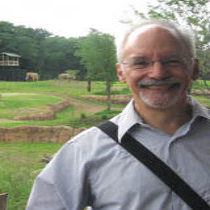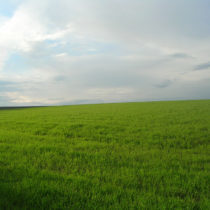Landscape Architecture for Landscape Architects › Forums › PLACES & SPACES › Another Failed Landscape – When Ideology Trumps User Needs
- This topic has 1 reply, 20 voices, and was last updated 14 years ago by
 Jon Quackenbush.
Jon Quackenbush.
-
AuthorPosts
-
October 11, 2011 at 7:19 pm #159820
 Trace OneParticipant
Trace OneParticipantU of penn is a private school – you are thinking of Penn state..and these are concepts one learns in grade school, and learns to respect..
October 11, 2011 at 7:24 pm #159819 Trace OneParticipant
Trace OneParticipantIs the only measure of a park how many people use it? Can you count a natural area, where we don’t spend any money at all, as a great site, even if only the occaisional person comes to find a bit of nature and peace? Or does such a space not deserve to live – would it be better as a Wal-mart? I have found one or two bay-side spots left in San Diego that are untouched, unknown..what a relief it can be…….
I say there cannot be too many ‘parks’ , and I would interpret that to mean there cannot be too much nature, but there can definitely be too many people.
That said, you both, Heather and Mr. Radish, have more site-specific points to make and I can agreee I hate the fake eco-system thing, ‘demonstration planted natural areas’ if that is what that site actually is..
I don’t see why the measure of a good park must be it’s use by humans, however..Aren’t parks places you go to be away from humans?
October 11, 2011 at 7:34 pm #159818Pat S. Rosend
ParticipantThanks for the link.
My feeling is that this is a park designed for passive recreation. IMHO the author of the piece is speaking to a different type of park use, a more active use. This park serves a different purpose. I don’t know if I would call it a fake environment. We try to teach where and when we can. What is hard to evaluate is how this fits in the City of Malibu. Does it meet a citizen need? Should this have been an active site vs. a passive site? Both types have something to offer the public. I am not sure why all the hate from this group about the park.
October 11, 2011 at 7:35 pm #159817 Alan Ray, RLAParticipant
Alan Ray, RLAParticipantYes, I thought Penn was Penn State, my mistake…
October 11, 2011 at 9:32 pm #159816 Roland BeinertParticipant
Roland BeinertParticipantIs it really the design of a park that makes it active? I think there are a lot of well-designed parks that are simply too large to be active all the time, and/or they are in the wrong location. This park is 20 acres. It would take a lot of people to make it seem active. Its in the civic center of Malibu, which probably means there are a few museums surrounding it, but very few residences or other uses. Without a variety of uses, the neighborhood surrounding the park is probably fairly inactive for most of the day. If the neighborhood isn’t active, its not really fair to expect the park to be active.
October 11, 2011 at 9:36 pm #159815 Heather SmithParticipant
Heather SmithParticipantLooks like it is in the wrong location to draw people. If this was located within a neighborhood I would imagine they would have had a greater likelihood of attracting users. I think some of these ideas are pretty stupid…the last thing I do when out and about is to read a huge paragraph on a sign designed to teach me something. I am more of the mindset that allows people to fall in love with nature, offer that…and they will have something invested in the care of the environment. Why are people the most important reason to design parks for? We are the caretakers of nature. If we truly want to show people why these places are important they actually have to want to go, then they are willing to spend money on conservation, etc. Much like the partnership with Ducks Unlimited and conservation groups, people will make the effort to preserve the things that they want out of life even if that just means preserving a space to play frisbee golf…which is probably NOT allowed here. 😉
Also, I don’t hate the idea…just responding to the article that was posted. I don’t agree with half of what the guy that wrote the article shared…but since I think landscape architects are deeply involved in creating connections with human and their environments, I would of course, take notice of the low usage of the park. When we discussed the memorial park in NYC what it ultimately came down to was how was the park used. I like to think that is the difference b/w an LA/LD and other designers…we shouldn’t be happy with the plan view appearance of a design more then then with how humans interface with the landscape. The very thing I LOVE about landscape architecture is that it sets about to create places where history can take place, where people have picnics with their families and where people have a chance to commune with nature.
Off topic: It is super interesting to see how the public spaces in NY are being used by protestors. Could the designers of Zucotti Park imagined that?
October 11, 2011 at 10:42 pm #159814 Trace OneParticipant
Trace OneParticipantHeather, I have found, in recent visits to new landscapes, that I STILL like the sign-boards that tell you something historical/environmental, whatever..It is the simplest and most temporarily enduring way for us LA’s to convey information..Otherwise you got nothing – altho there IS the museum tour internet connection that has been developed…Placards work..And I read them..I BET you would also as an intelligent, interested landscape participant..
But the central argument the essayist is making is, is it worthwhile to fight invasive species? Isn’t is just darwinism, as has happened over all our histories..
Is it worthwhile to fight invasive species?
What are your thoughts on that..???
October 11, 2011 at 11:11 pm #159813 Heather SmithParticipant
Heather SmithParticipantHonestly, I am not sure that the writer knows what point he is trying to make. The part I latched onto was the low use of the park by citizens.
In regards to invasive species this is something Jon and I have discussed before. I do think there is a natural evolution that takes place and we are part of the global ecology. I think the line of thought that we are the ones that determine when a plant species time has come is rather arrogant and ignores that fact that we are as much a part of the ecology as anything else. That means we do effect…even inadvertently what takes root in our neighborhoods and fields. I know there are entire organizations dedicated to going out into fields and digging out weeds. I could see if the species was something like kudzu, bamboo or blackberries that can absolutely take over everything. But this isn’t always the case. And do we really think we are going to hold back non native species from coming into an area? Really? What will happen in the long run is that another species will enter in that creates competition whether that is an animal, insect or plant. Is the most efficient use of our time spent digging out Oxeye daisies?
October 11, 2011 at 11:25 pm #159812 Rob HalpernParticipant
Rob HalpernParticipantI ought to have done some due diligence, as Jason did, before posting.
The writer simply missed the point of the project or disagrees with it. He is not finding fault with what it is so much as carping that it is not what he wishes it to be.
But it is noteworthy that he is the editor of the local paper
October 12, 2011 at 12:09 am #159811 ncaParticipant
ncaParticipantAside from all the stuff that we care about, the bottom line is that the author, a layperson, feels that the park isn’t interesting enough for people to visit.
Regardless of the ultimate purpose of the park it still has to be a place where people want to go. I think this says alot about the direction the profession is heading in terms of philosophy. Obviously, there has been a massive shift in fundamental thinking about how a park should function since the days of Olmsted to today.
October 12, 2011 at 12:29 am #159810 David BarbarashParticipant
David BarbarashParticipantNot to derail this thread, but other than funding sources, average class sizes, and racial demographics, there is no demonstrable difference between public and private colleges.
Having said that, I agree with your points. The Colorado river has seen it’s flow reduced from roughly 22,000 cu. ft./sec in 1903 to less than 4,000 cu. ft/sec by 1980. I have no clue how much lower it is today… Because of this, 6.5% of California’s total electricity use is dedicated to pumping water into the cities.
October 12, 2011 at 12:49 am #159809Pat S. Rosend
ParticipantI am going to disagree a bit with you here. Parks serve many roles. not all have recreation opportunities. Many parks serve other functions. I think it is the term park that brings a certain image to mind.
It is true that the public thinks of parks as places to go do something in, but our parks serve many other purposes.
October 12, 2011 at 2:05 am #159808 idaParticipant
idaParticipant“a native plant park kind of looks like a garden of weeds. Why do we still make believe there is no water in Southern California? This isn’t 1911.”
I totally stopped reading after this sentence. Stupid article, stupid opinion. If he wanted to walk in a green forest, then why the f* would you move to a desert? I’m tired of dealing with these retards, good night.
October 12, 2011 at 2:28 am #159807 idaParticipant
idaParticipantsorry, hope no one is offended. just venting
October 12, 2011 at 3:54 am #159806Brett T. Long
ParticipantYou aren’t alone.
-
AuthorPosts
- You must be logged in to reply to this topic.


